For our ancestors, the construction of a new house was one of the most important events in the family. Houses were built thoroughly, for several generations. This event was associated with many customs and rituals that help to build a reliable house in which prosperity and harmony will flourish. Now most of the rules and customs that were observed in ancient times are forgotten and are not relevant, as materials and technologies have changed, but villagers still remember and adhere to many traditions, rules and rituals of construction created in past centuries. It all started with the choice of a place for housing, which was determined by many circumstances.
Here are some mandatory requirements for choosing a suitable location for your future home.
- Outbuildings and a garden plot should face a natural body of water or be located in a field.
- It is better to choose a plot for a homestead:
- On virgin soil, on "peaceful" land;
- On a high ground where spring and rainwater do not collect;
- Where there is no abundant morning dew;
- On a site without trees and their roots;
- Where there is enough space for all outbuildings;
- With a convenient entrance to the estate.
- The front door of the house should be located on the east or south side.
- If a new house was going to be built on a previously inhabited place, then only if there had once been a prosperous economy, a friendly family, and healthy children here.
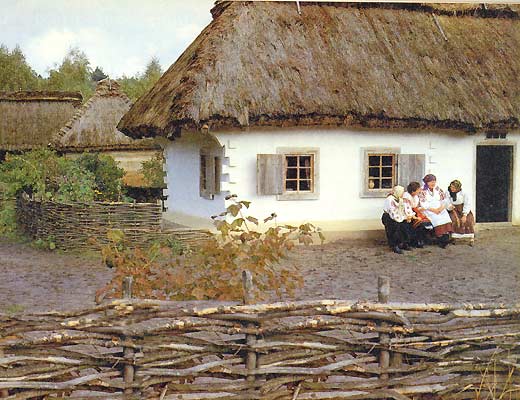 There were a large number of prohibitions on the location of a new house, which helped future residents avoid many troubles and sometimes terrible misfortunes. Therefore, a new house was NOT built:
There were a large number of prohibitions on the location of a new house, which helped future residents avoid many troubles and sometimes terrible misfortunes. Therefore, a new house was NOT built:
- smaller than the old one - so that the family does not decrease;
- within the boundaries of the old house, but tried to occupy at least part of the new land;
- on land where bad people used to live, for example, thieves or drunkards;
- where residents died from epidemics;
- where people were constantly sick;
- in places where families often quarreled or even divorced;
- at the scene of a murder or some other crime;
- on the site of former burial grounds, cemeteries;
- on the territory of holy places, destroyed churches;
- in places where grain was previously threshed;
- at road intersections, crossroads, wastelands, on the border of the plot;
- exactly in the center of the plot of land, dividing it in half;
- where a road or at least a path used to pass;
- in marshy or rocky areas;
- in place of growing trees, such as thorn, elderberry, pear and especially viburnum;
- on the site of large pits, including a former cellar;
- where the stable or barn used to be located;
- at an abandoned landfill or sewage disposal site;
- in low areas where rainwater constantly flowed;
- at the site of a house burned down by lightning.
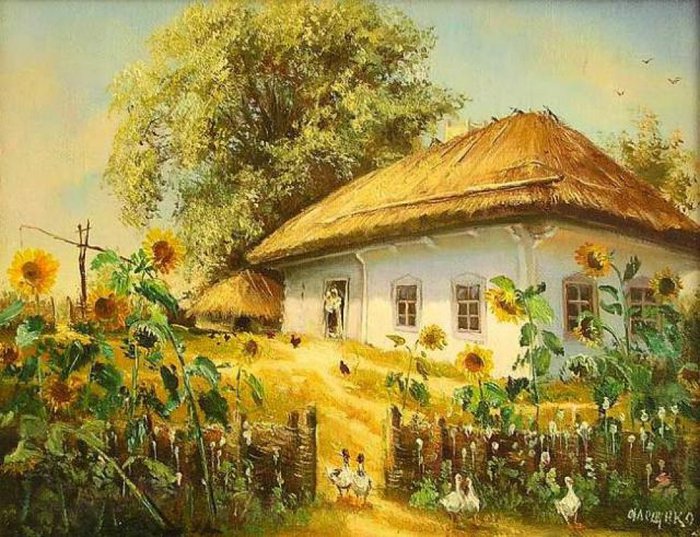 Those who were not confident in their knowledge of determining a place for construction sought advice from experienced old people or fortune tellers. Sometimes a plot of land was checked with rye. It was sown in the intended place, and if the harvest was good, then the place was good, it was possible to build.
Those who were not confident in their knowledge of determining a place for construction sought advice from experienced old people or fortune tellers. Sometimes a plot of land was checked with rye. It was sown in the intended place, and if the harvest was good, then the place was good, it was possible to build.
When the place was chosen, the correctness of the choice was also checked with the help of an ancient rite. The contour of the future dwelling was marked and a stone was placed or wooden pegs were driven into each of its corners. With the onset of darkness, grains of wheat or rye were placed near these pegs, the number of which was a multiple of three, for example, 30, or 33, or 36, and so on.
In the center of the designated area, a table or chair was placed, covered with a towel, and a cross, bread, a bowl of water, and salt were placed on it. Sometimes containers of water were left near the pegs in the corners of the area. They tried to ensure that no outsider noticed the ritual being performed.
In the morning, before dawn, they went to the site to check the condition of the grains, bread, water, and salt left in the evening. If nothing had changed overnight, everything remained in place, then the site was considered safe and suitable for construction. For fidelity, this ritual was repeated two or three times.
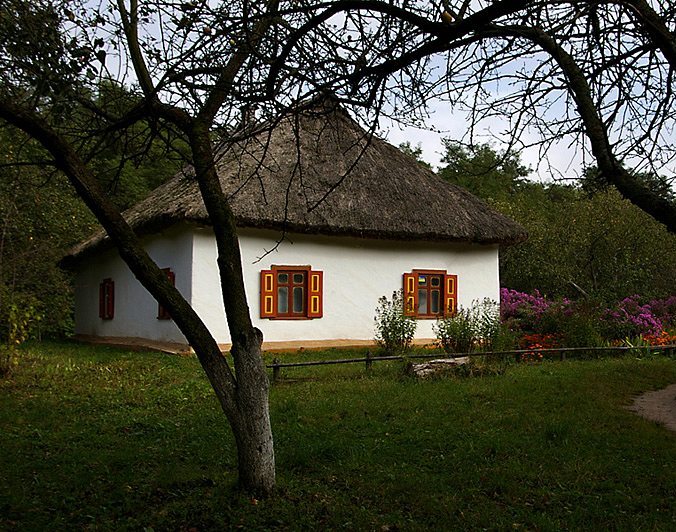 Another fairly common ritual was performed to check the humidity of the area. A metal pan or clay pot with a piece of wool inside was left overnight on the selected area. In the morning, the wool was touched to determine how much moisture it had become. If the wool was very wet, it meant that a house could not be built on this area - it would be damp and unhealthy.
Another fairly common ritual was performed to check the humidity of the area. A metal pan or clay pot with a piece of wool inside was left overnight on the selected area. In the morning, the wool was touched to determine how much moisture it had become. If the wool was very wet, it meant that a house could not be built on this area - it would be damp and unhealthy.
As a rule, ceremonies to determine the location for a new house are carried out by men - this has been the custom since ancient times, but in the last century and a half, women have also begun to participate in these ceremonies.
A good time to start construction
The success of the work also depended on the correctly chosen date for laying the foundation of the house. The house must be built before the cold weather, so construction began in the spring, or in extreme cases, in the summer. They tried to start during the full moon so that the house would always be full of goodness. The day of the week was very important, usually they started on Tuesdays, Thursdays, Fridays or Saturdays. Monday and Wednesday were considered unlucky days of the week for laying the foundation of the house.
It was not customary to start construction on holidays. If, out of ignorance, one starts building on days dedicated to the holy martyrs, obstacles will arise and the house will not be completed. They tried not to build in a leap year. Having started construction, they worked all days, resting only on holidays, Sundays and great fasts - Peter's Fast and the Savior's Fast.
The ceremony of laying the foundation of a new house
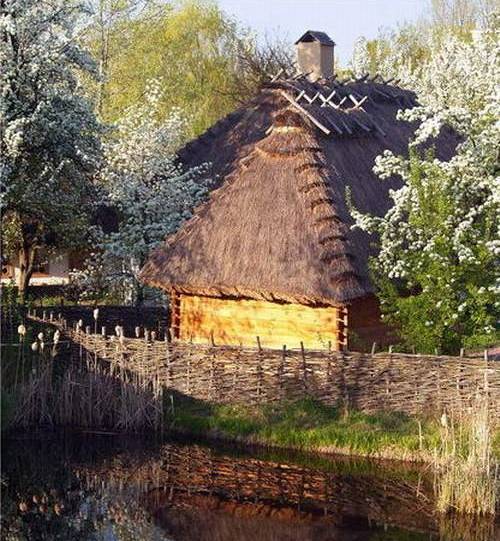 On the day scheduled for the foundation of the house, early in the morning, the ceremony began. A small table was placed at the marked place near the place where the stove would be built, or in the eastern corner of the future house. The table was covered with a towel and bread and salt were placed on it. A cross, flowers, and a bowl of wine or water were placed nearby.
On the day scheduled for the foundation of the house, early in the morning, the ceremony began. A small table was placed at the marked place near the place where the stove would be built, or in the eastern corner of the future house. The table was covered with a towel and bread and salt were placed on it. A cross, flowers, and a bowl of wine or water were placed nearby.
The eldest of the craftsmen would approach the table, take the bread on the towel, kiss it and ask God for help in his work. The towel was given to the craftsman as a gift, and in addition, he was given a piece of cloth for clothing and money. This was a symbolic advance payment for future work. Usually the craftsman had assistants with whom he himself paid.
Then the senior master would knock down a wooden cross that would "guide" the construction. It would be gradually raised during the construction process, to the very top of the roof, and then nailed to a support in the attic so that it would protect the house from trouble.
A raven flying near a new building when the first stone was being laid was considered a good sign, promising a long life for the new building.
The master was always treated with great respect, he was generously treated, tried to appease him so that he would not "stab" the owners when laying the first beam. At this time, it was impossible to catch the master's eye - from his gaze a person could get sick or even die. When building a house, from the laying to the completion, it was impossible to lay trees crosswise, so as not to attract a quick death to the new home.
According to custom, sacrificial and symbolic objects were laid on the site of the future house. Sacrificial objects included small money, grain, sheep's wool, flowers, herbs, garlic, icons, holy water, etc. Symbolic objects were the first peg, the first stone, clay rolls, and various materials for construction. These attributes were laid only by the future owners of the house, although in some areas their godparents did this.
 Such sacrifices were laid in the four main corners of the house under construction. Although in many places they were laid only in one "red", that is, the main corner, which was on the eastern side. Later this corner began to be called holy.
Such sacrifices were laid in the four main corners of the house under construction. Although in many places they were laid only in one "red", that is, the main corner, which was on the eastern side. Later this corner began to be called holy.
This rite of laying a building sacrifice is very ancient. Our pagan ancestors appeased the harsh gods of nature so that they would not destroy their homes by offering them sacrifices. At first, the victims were animals, then plants, and later they began to be bought off with small coins. In this form, the tradition exists to this day. Builders or owners put money under the first stone so that the house would be rich and happy.
When the master and his assistants finished laying the foundation, according to custom, the owners would arrange a festive meal, inviting not only the workers, but also their relatives and fellow villagers to a generous feast. Such a meal was considered a symbolic tribute to nature for the space taken up for construction.
At the beginning of the dinner, the host thanked all the guests for coming to his celebration, drinking the first glass of wine, and then treated all the guests in turn, starting from the eastern "red" corner. After a hearty dinner, the construction work continued, and the guests often also got down to business and helped the master. Later, construction was often carried out with the help of fellow villagers, all together. This was called toloka.
The ritual of laying the scythe
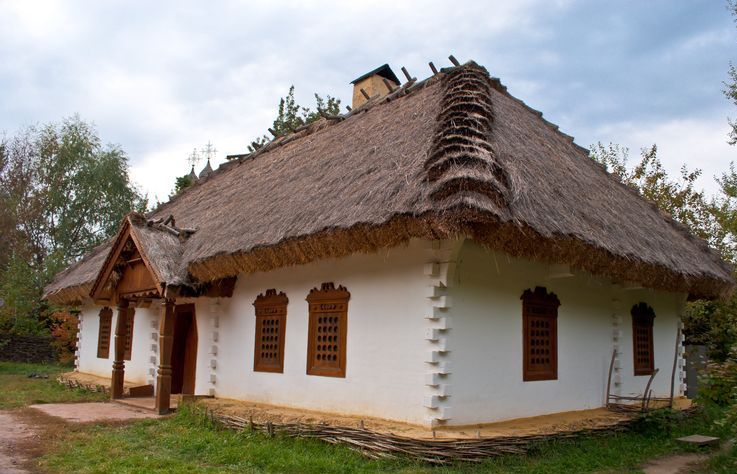 The rafters were laid on the already finished walls of the house. This is the most important beam that supports the ceiling. The mat is not only the support of the ceiling of the house, but also the symbolic spiritual support of the family living in this house. Therefore, special rituals were dedicated to its laying. In the recesses into which the rafters were lowered, the future owners put money for the well-being of the house, and sacrificial attributes were laid in the corners of the walls. In the eastern corner, they placed things consecrated in the church, most often incense sticks, and in the opposite corner - material things, such as money and bread, so that the house would not only be protected, but also in abundance. According to the sign, one should not knock while laying the rafters so that the stove in this house would not smoke.
The rafters were laid on the already finished walls of the house. This is the most important beam that supports the ceiling. The mat is not only the support of the ceiling of the house, but also the symbolic spiritual support of the family living in this house. Therefore, special rituals were dedicated to its laying. In the recesses into which the rafters were lowered, the future owners put money for the well-being of the house, and sacrificial attributes were laid in the corners of the walls. In the eastern corner, they placed things consecrated in the church, most often incense sticks, and in the opposite corner - material things, such as money and bread, so that the house would not only be protected, but also in abundance. According to the sign, one should not knock while laying the rafters so that the stove in this house would not smoke.
The "flower" ceremony - the end of construction
During the entire period of work on the construction of the house, several ceremonies were held, marking the completion of certain important stages in the construction. One of these stages was the completion of laying the ceiling of the house. As a sign of the completion of the work, the master attached a "flower" to the rafter - a wooden cross, on which a bouquet of flowers and ears of grain was attached. The owner hung a handkerchief on the rafter, in which bread and salt were wrapped, a sheepskin coat and a tablecloth. These items meant the wish for the future house to be prosperous, warm and clean. The handkerchief with bread and salt was given to the master.
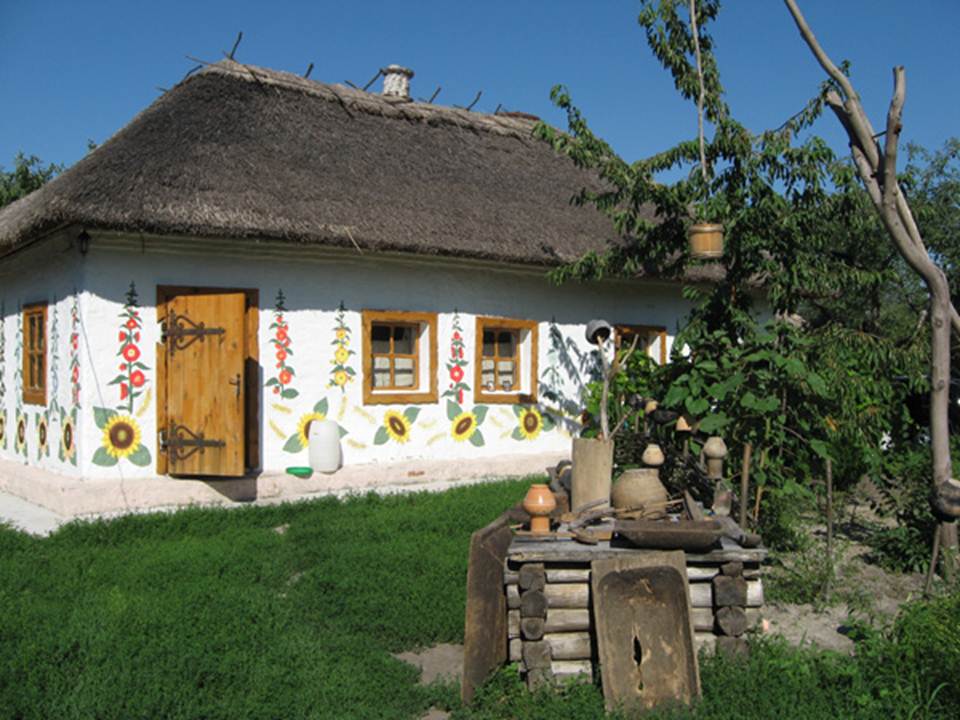 When the construction was completed, the roof was laid, the builders installed a "flower" on the top of the roof, which was a kind of crown of the work. After that, the owner finally settled with the master and arranged a big festive dinner for everyone who participated and helped in the construction. The rite of installing the "flower" still exists, it is loved and observed by master builders, because it promises them a reward for the great work done.
When the construction was completed, the roof was laid, the builders installed a "flower" on the top of the roof, which was a kind of crown of the work. After that, the owner finally settled with the master and arranged a big festive dinner for everyone who participated and helped in the construction. The rite of installing the "flower" still exists, it is loved and observed by master builders, because it promises them a reward for the great work done.
Among other building customs, the rite of incompleteness is observed. It was believed that it was impossible to completely complete all the work, so a small area of the roof above the eaves was left uncovered so that all evil spirits could fly out of the new house. Later, this area was closed. For the same reason, in the first year after the completion of construction, the entire house was not completely whitewashed, but a part of the wall was left unwhitewashed in a place invisible to outsiders.
Modern builders mainly adhere to customs aimed at improving the well-being of their own and the future owners of the house, but along with them, the spiritual traditions, history, and culture of our people are also preserved.

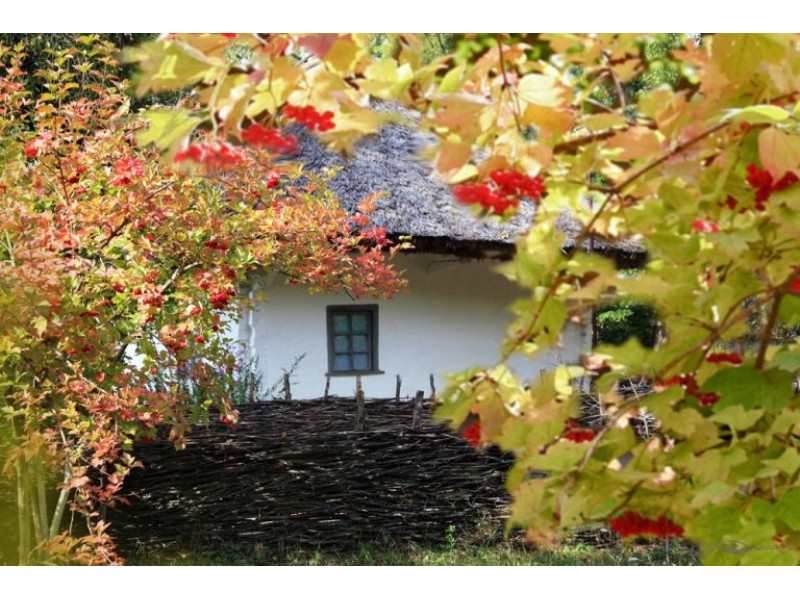
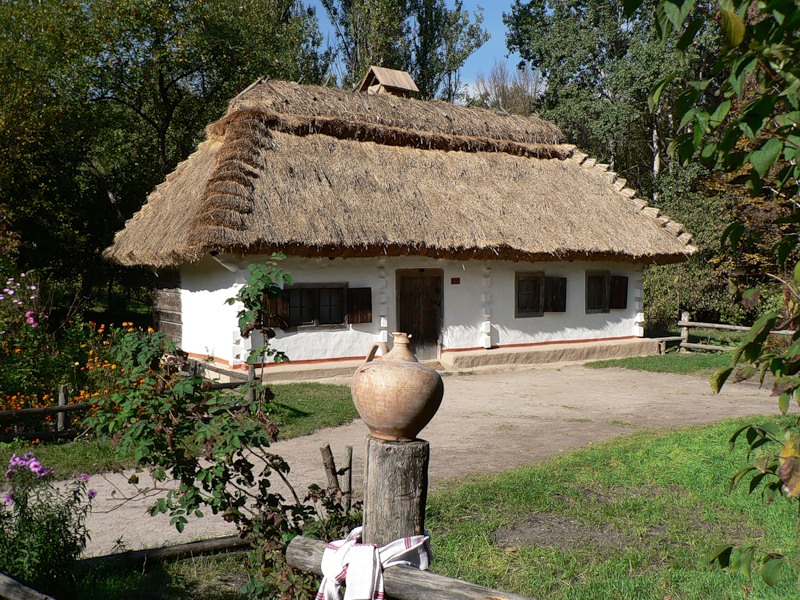
Write a comment